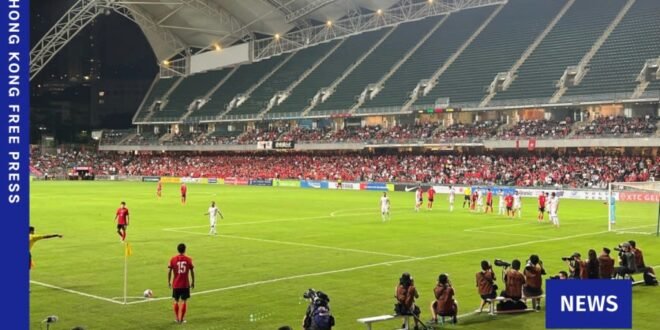Financial Challenges and Future Plans for Hong Kong Stadium
The Hong Kong Stadium has faced significant financial challenges over the past two fiscal years, with losses amounting to nearly HK$35 million. This information was shared by the government, which also expressed openness to suggestions on how to better utilize the major sports venue.
Rosanna Law, the Secretary for Culture, Sports and Tourism, addressed a lawmaker’s inquiry on Wednesday, revealing that the stadium incurred expenses of HK$57.2 million during the 2024/25 fiscal year while generating only HK$37.4 million in income. This resulted in a deficit of approximately HK$20 million. In the previous fiscal year, 2023/24, the stadium recorded a deficit of HK$15 million, following the reopening of Hong Kong’s borders after the pandemic.
The Hong Kong Stadium, which opened in 1952 and underwent redevelopment in 1994, is located in Causeway Bay and has a seating capacity of 40,000. It was once the largest stadium in Hong Kong until March this year, when the Kai Tak Sports Park, featuring the 50,000-seat Kai Tak Stadium, was completed.
In 2019, as the Kai Tak Sports Park was under development, the government proposed redeveloping the Hong Kong Stadium into a public sports ground equipped with facilities for booking. There were also discussions about allowing runners to use the space for free, according to local media reports.
Last year, Hong Kong’s leader John Lee mentioned in his policy address that authorities would review the redevelopment plan to ensure the Hong Kong Stadium’s “synergy” with the Kai Tak Sports Park. Rosanna Law emphasized on Wednesday that the Culture, Sports and Tourism Bureau will consider the operations of the Kai Tak Sports Park when assessing the role of the Hong Kong Stadium.
At present, the Hong Kong Stadium continues to serve as a key venue for large-scale events, according to Law. Over the past three years, it has hosted 39 ball games and 10 other events, highlighting its continued importance in the city’s sports and cultural calendar.
Potential for Revitalization
Despite the financial losses, there are ongoing discussions about how to revitalize the Hong Kong Stadium and make it more relevant in the evolving sports landscape. The government has acknowledged the need to explore new ways to maximize the stadium’s potential, especially in light of the opening of the Kai Tak Sports Park.
One possible approach is to focus on community engagement and public access. By offering more affordable or free access to the facility, the stadium could attract a wider audience and generate greater public support. This aligns with previous proposals that suggested using the space for recreational activities beyond traditional sporting events.
Another consideration is the integration of the stadium with other sports facilities in the city. The Kai Tak Sports Park has set a new standard for large-scale sports venues, and the Hong Kong Stadium may benefit from adopting similar strategies. This could include hosting more events that cater to both professional athletes and amateur enthusiasts.
Additionally, the government could explore partnerships with private entities to enhance the stadium’s operations. These collaborations might help reduce costs and increase revenue through sponsorships, event management, and other commercial opportunities.
Looking Ahead
As the city continues to develop its sports infrastructure, the future of the Hong Kong Stadium remains an important topic of discussion. While it has faced financial difficulties, its historical significance and strategic location make it a valuable asset.
The upcoming review of the redevelopment plan presents an opportunity to redefine the stadium’s purpose and ensure it remains a vital part of Hong Kong’s sports and cultural scene. By learning from the success of the Kai Tak Sports Park and incorporating innovative ideas, the Hong Kong Stadium could find a new path forward that benefits both the community and the economy.
 Info Malang Raya Its All About World News
Info Malang Raya Its All About World News



